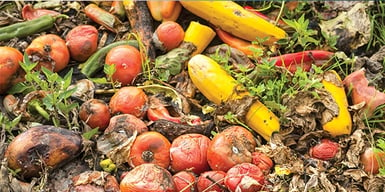
Anaerobic Digestion: Transforming Food Waste into Renewable Energy
In the quest for sustainable waste management, Anaerobic Digestion (AD) has emerged as a powerful process that diverts food waste away from landfills and transforms it into valuable resources. By leveraging natural processes, AD not only mitigates the environmental impact of food waste but also contributes to renewable energy production and soil health.
Understanding Anaerobic Digestion
Anaerobic Digestion is a biological process that breaks down organic matter, such as food waste, in the absence of oxygen. This process occurs in a sealed environment known as a digester. Microorganisms within the digester decompose the organic material, producing biogas—a mixture of methane and carbon dioxide—and digestate, a nutrient-rich substance.
-
Collection and Pre-treatment: The AD process begins with the collection of food waste. To enhance efficiency, the waste is often pre-treated to remove contaminants and prepare it for digestion. Here, technologies like the Eco-Smart Food Waste Dryer play a crucial role. This innovative dryer reduces the moisture content of food waste at the source, making it lighter and easier to transport while preserving its organic content for efficient digestion.
-
Digestion: The dried food waste is then fed into the anaerobic digester. Inside the digester, microorganisms break down the organic material in a multi-stage process. The primary stages include hydrolysis, acidogenesis, acetogenesis, and methanogenesis. Each stage involves different groups of microorganisms that progressively convert the waste into simpler compounds, eventually producing biogas and digestate.
-
Biogas Production: Biogas, primarily composed of methane, is a valuable renewable energy source. It can be used to generate electricity and heat or be upgraded to biomethane, which can replace natural gas. Utilising biogas helps reduce reliance on fossil fuels, lowering greenhouse gas emissions and promoting energy sustainability.
-
Digestate Utilisation: The remaining digestate is rich in nutrients, making it an excellent organic fertiliser. It can be applied to agricultural land to improve soil health and fertility, reducing the need for chemical fertilisers.
Benefits of Anaerobic Digestion
By diverting food waste from landfills, AD significantly reduces methane emissions—a potent greenhouse gas that is approximately 25 times more effective at trapping heat in the atmosphere than carbon dioxide. Landfills are major sources of methane, and by processing food waste through AD, we can mitigate this environmental threat.
Moreover, the AD process contributes to the circular economy by converting waste into valuable resources. The use of Eco-Smart Food Waste Dryers enhances the efficiency of AD by optimising the pre-treatment stage, ensuring that the waste is ready for effective digestion.
In conclusion, Anaerobic Digestion is a vital component of sustainable waste management. By transforming food waste into renewable energy and organic fertiliser, AD not only helps combat climate change but also promotes a circular economy. Integrating technologies like the eco-smart food waste dryer into this process further enhances its efficiency, paving the way for a greener, more sustainable future.
